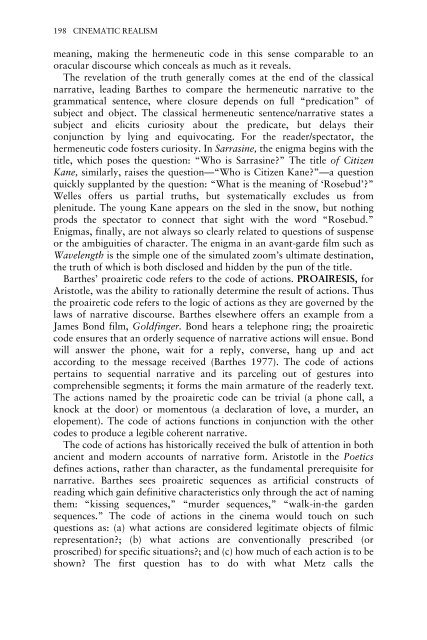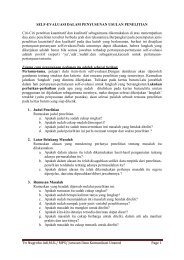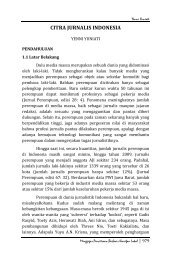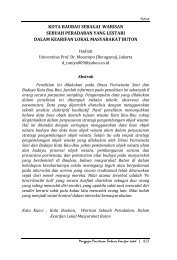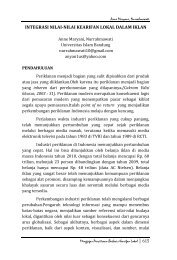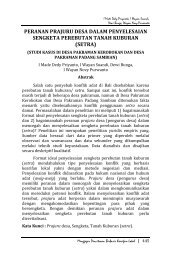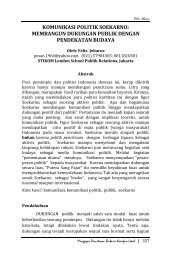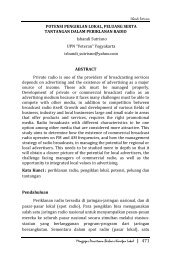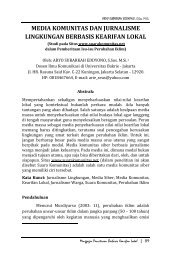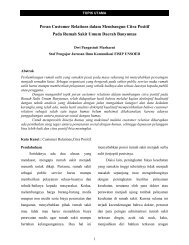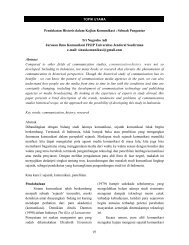New Vocabularies in Film Semiotics
New Vocabularies in Film Semiotics
New Vocabularies in Film Semiotics
You also want an ePaper? Increase the reach of your titles
YUMPU automatically turns print PDFs into web optimized ePapers that Google loves.
198 CINEMATIC REALISM<br />
mean<strong>in</strong>g, mak<strong>in</strong>g the hermeneutic code <strong>in</strong> this sense comparable to an<br />
oracular discourse which conceals as much as it reveals.<br />
The revelation of the truth generally comes at the end of the classical<br />
narrative, lead<strong>in</strong>g Barthes to compare the hermeneutic narrative to the<br />
grammatical sentence, where closure depends on full “predication” of<br />
subject and object. The classical hermeneutic sentence/narrative states a<br />
subject and elicits curiosity about the predicate, but delays their<br />
conjunction by ly<strong>in</strong>g and equivocat<strong>in</strong>g. For the reader/spectator, the<br />
hermeneutic code fosters curiosity. In Sarras<strong>in</strong>e, the enigma beg<strong>in</strong>s with the<br />
title, which poses the question: “Who is Sarras<strong>in</strong>e?” The title of Citizen<br />
Kane, similarly, raises the question—“Who is Citizen Kane?”—a question<br />
quickly supplanted by the question: “What is the mean<strong>in</strong>g of ‘Rosebud’?”<br />
Welles offers us partial truths, but systematically excludes us from<br />
plenitude. The young Kane appears on the sled <strong>in</strong> the snow, but noth<strong>in</strong>g<br />
prods the spectator to connect that sight with the word “Rosebud.”<br />
Enigmas, f<strong>in</strong>ally, are not always so clearly related to questions of suspense<br />
or the ambiguities of character. The enigma <strong>in</strong> an avant-garde film such as<br />
Wavelength is the simple one of the simulated zoom’s ultimate dest<strong>in</strong>ation,<br />
the truth of which is both disclosed and hidden by the pun of the title.<br />
Barthes’ proairetic code refers to the code of actions. PROAIRESIS, for<br />
Aristotle, was the ability to rationally determ<strong>in</strong>e the result of actions. Thus<br />
the proairetic code refers to the logic of actions as they are governed by the<br />
laws of narrative discourse. Barthes elsewhere offers an example from a<br />
James Bond film, Goldf<strong>in</strong>ger. Bond hears a telephone r<strong>in</strong>g; the proairetic<br />
code ensures that an orderly sequence of narrative actions will ensue. Bond<br />
will answer the phone, wait for a reply, converse, hang up and act<br />
accord<strong>in</strong>g to the message received (Barthes 1977). The code of actions<br />
perta<strong>in</strong>s to sequential narrative and its parcel<strong>in</strong>g out of gestures <strong>in</strong>to<br />
comprehensible segments; it forms the ma<strong>in</strong> armature of the readerly text.<br />
The actions named by the proairetic code can be trivial (a phone call, a<br />
knock at the door) or momentous (a declaration of love, a murder, an<br />
elopement). The code of actions functions <strong>in</strong> conjunction with the other<br />
codes to produce a legible coherent narrative.<br />
The code of actions has historically received the bulk of attention <strong>in</strong> both<br />
ancient and modern accounts of narrative form. Aristotle <strong>in</strong> the Poetics<br />
def<strong>in</strong>es actions, rather than character, as the fundamental prerequisite for<br />
narrative. Barthes sees proairetic sequences as artificial constructs of<br />
read<strong>in</strong>g which ga<strong>in</strong> def<strong>in</strong>itive characteristics only through the act of nam<strong>in</strong>g<br />
them: “kiss<strong>in</strong>g sequences,” “murder sequences,” “walk-<strong>in</strong>-the garden<br />
sequences.” The code of actions <strong>in</strong> the c<strong>in</strong>ema would touch on such<br />
questions as: (a) what actions are considered legitimate objects of filmic<br />
representation?; (b) what actions are conventionally prescribed (or<br />
proscribed) for specific situations?; and (c) how much of each action is to be<br />
shown? The first question has to do with what Metz calls the


